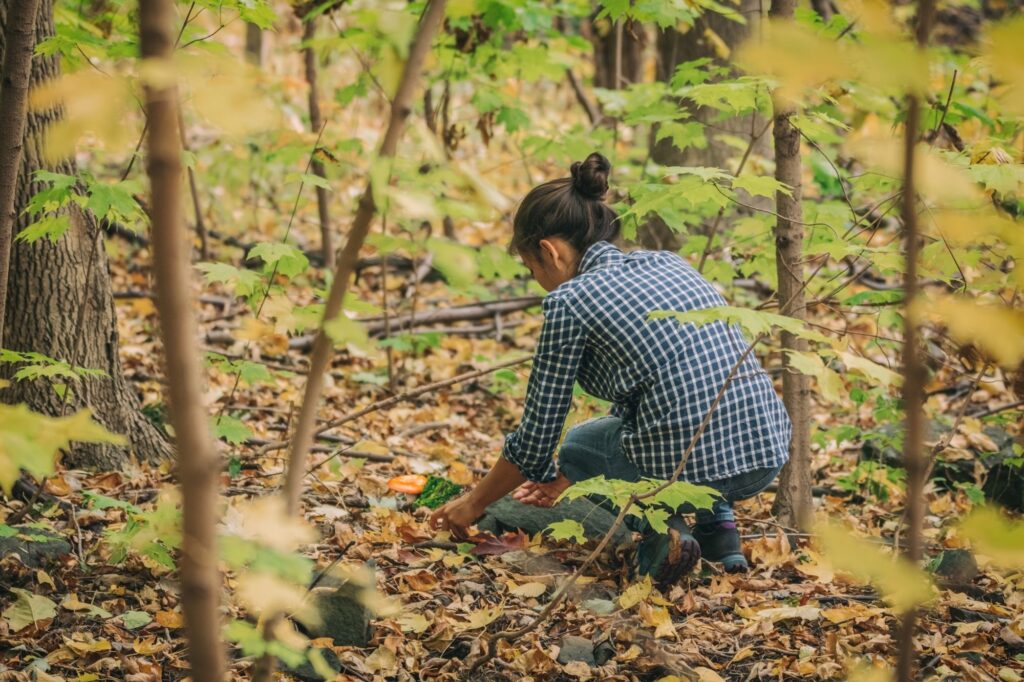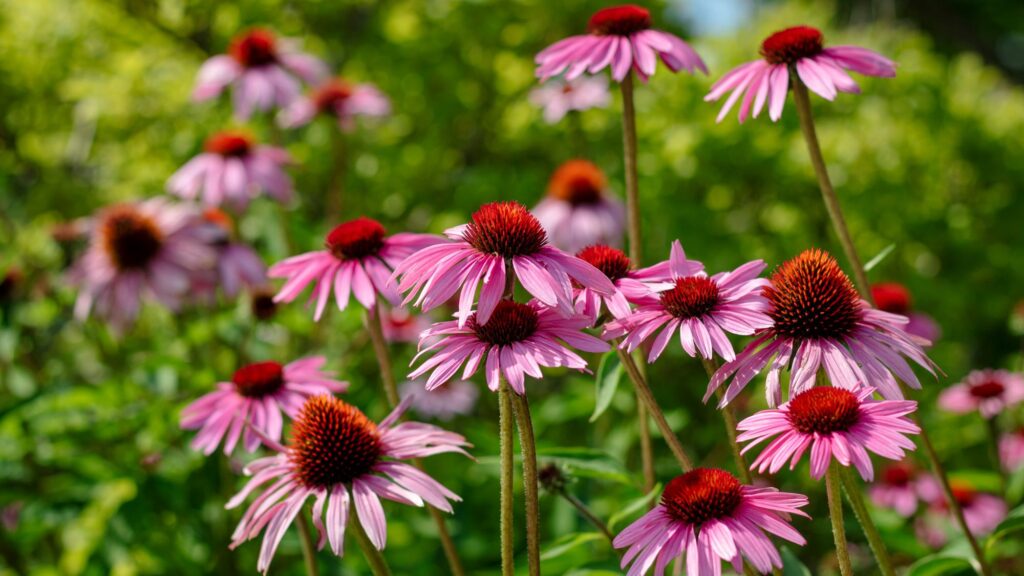
Spring is a season of renewal, and what better way to embrace the awakening of nature than through the time-honored practice of foraging? The Midwest, with its diverse landscapes, offers a rich tapestry of edible treasures waiting to be discovered. Foraging can help to foster an appreciation for the #MidwestSpiritOfPlace Powell Gardens, Kansas City’s botanical garden, exemplifies by connecting us to the traditions, recipes, and history of the land we call home.
In the spring, some of the best forageable items are the shoots, leaves, and roots of plants. In this guide, we’ll delve into the delights of spring foraging, focusing on seven plants that are native to the Midwest.
NOTE: This post is a part of Powell Gardens’ Midwest Foraging education series. Learn about fall foraging here and winter foraging here. Foraging is not permitted on Powell Gardens’ property. In the interest of public health, safety, and in respect of our conservation efforts, all participants are expected to appreciate this content for educational purposes only at Powell Gardens.

Morel Mushrooms (Morchella species)
The elusive morel mushrooms are a special prize for spring foragers. As temperatures rise, these distinctive, honeycomb-capped fungi emerge from the forest floor. Morels commonly appear after warm, moist spring weather with daytime temperatures in the low 70s and nighttime temperatures in the 50s. Look for morels near hardwood trees, particularly oak and ash.
To harvest, use a sharp knife to cut the stem. Many mushroom hunters put their bounty in mesh bags while hunting, to spread out more spores for next year’s harvest. However, this is not scientifically proven. Gently soak and clean mushrooms of sand and debris in a salt mixture before you prepare them.
Culinary Connection: Sauté harvested morels with butter and garlic! The Missouri Department of Conservation has many public recipes available for morel mushrooms.
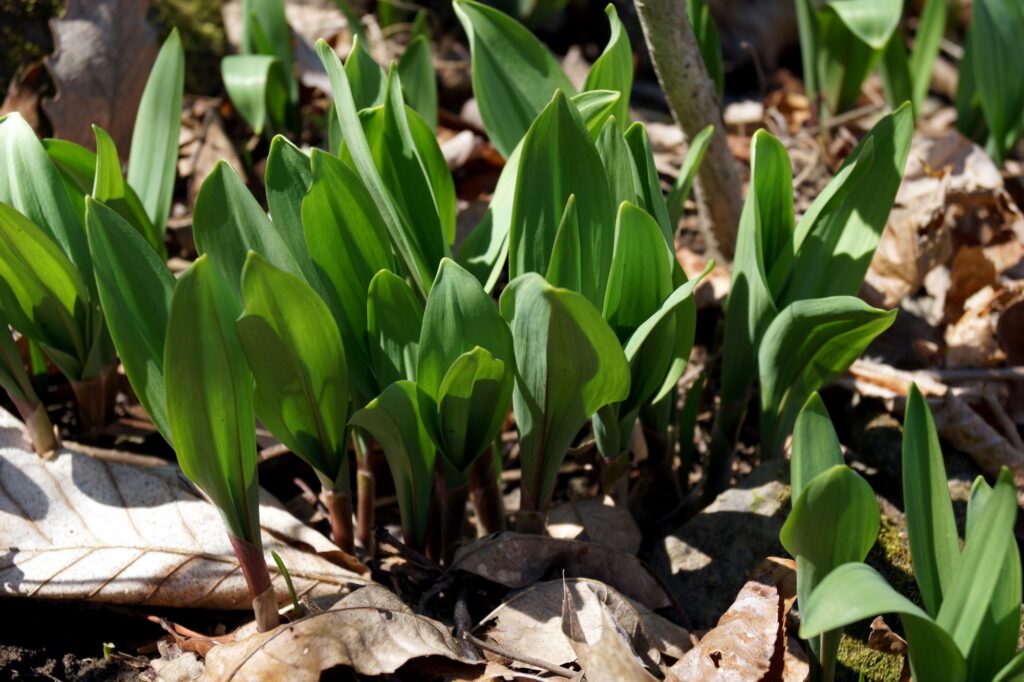
Ramps (Allium tricoccum)
Ramps, also known as wild leeks, are aromatic wild onions with a pungent flavor. Found in shaded woodlands, these early spring greens add a burst of freshness to dishes. Harvest responsibly by taking only a portion of the leaves, leaving the bulbs to propagate and ensure the sustainability of this delicious springtime treat.
Culinary Connection: All parts of ramps are edible! Try using the greens in place of chives or making a herb butter.
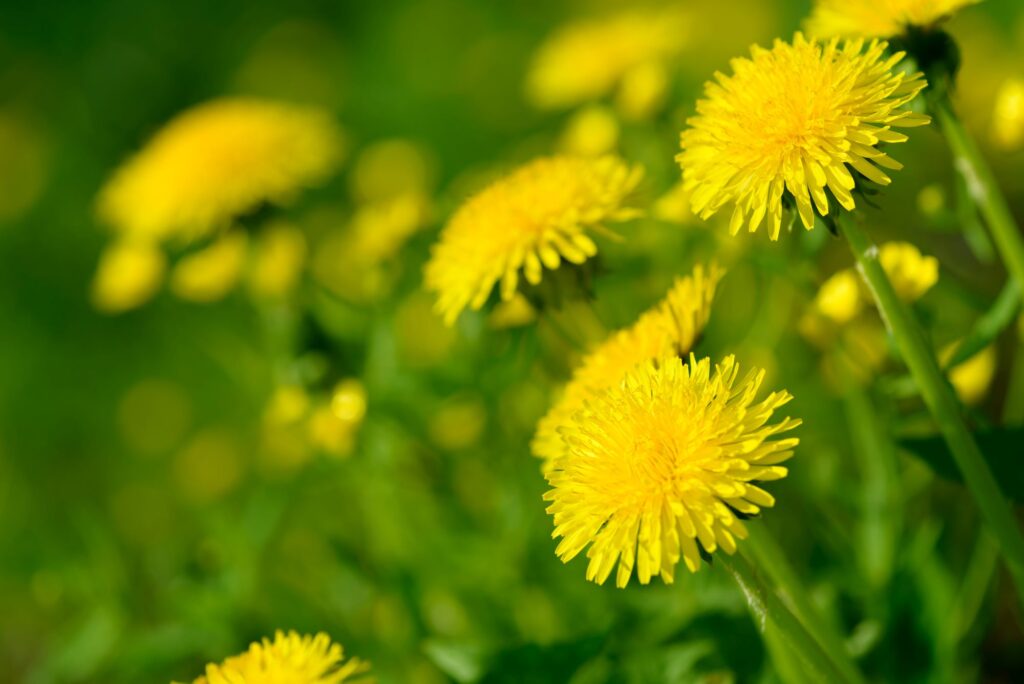
Dandelion Greens (Taraxacum officinale)
Often dismissed as weeds, dandelions offer a nutritional powerhouse in their tender young leaves. Packed with vitamins and minerals, these greens can be harvested from lawns, meadows, or the edges of woodlands.
Culinary Connection: Use them in salads or sauté them with olive oil and garlic for a flavorful and nutritious addition to your spring meals.
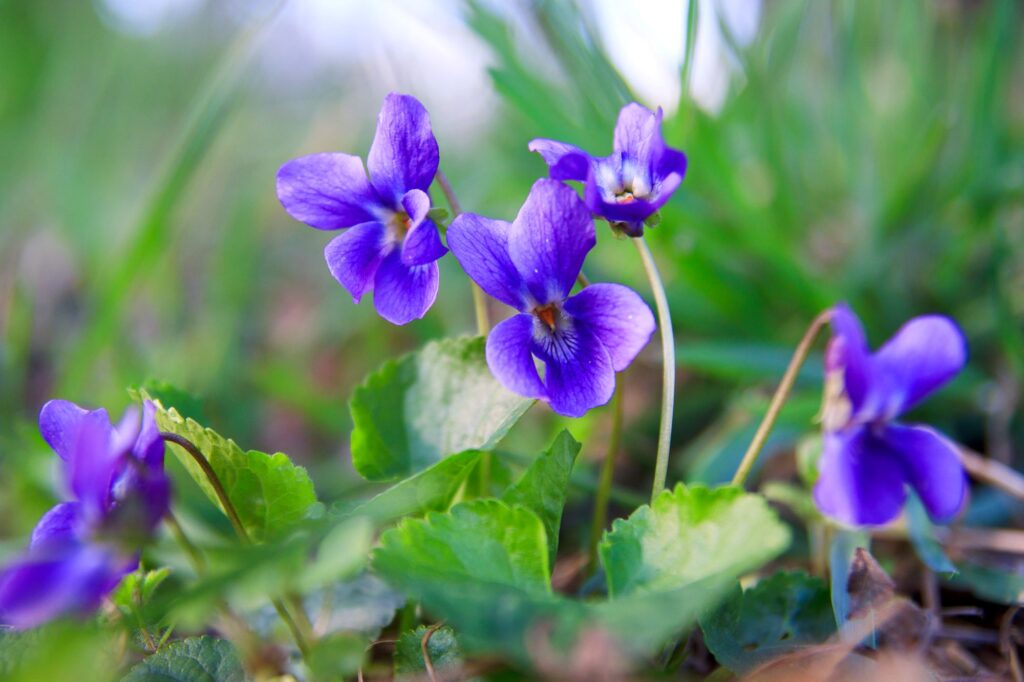
Wild Violet (Viola spp.)
With their vibrant purple and white blossoms, wild violets signal the arrival of spring. These delicate beauties are commonly found in lawns, gardens, and woodland edges, bringing a touch of elegance to your foraged feast.
Culinary Connection: Both the flowers and leaves are edible and can be added to salads or used as a garnish.
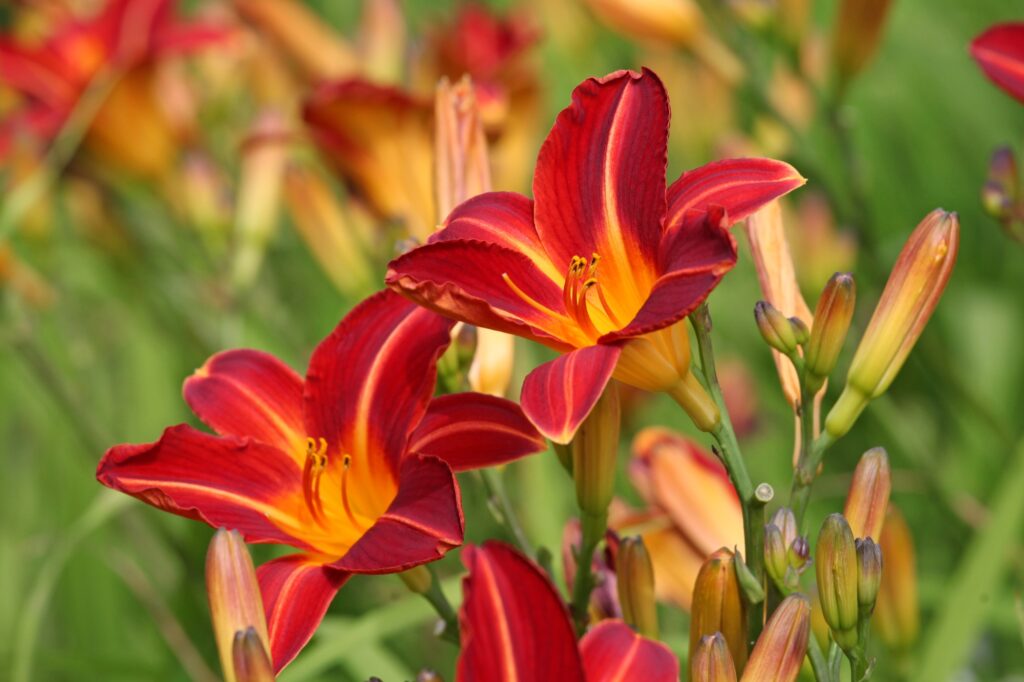
Daylilies (Hemerocallis)
Daylilies flourish as popular perennials, commonly found in gardens and roadsides. The buds and tubers are edible. To keep your daylily supply, dig up some of the tubers (removing up to 2/3 as a harvest) and replant for next year.
Culinary Connection: Buds can be eaten raw or cooked. Roast tubers for a potato like taste. The shoots can be cooked greens for stir-fries and frittatas. See this article from foraging expert, Ellen Zachos, for a pickled day lilies bud recipe!
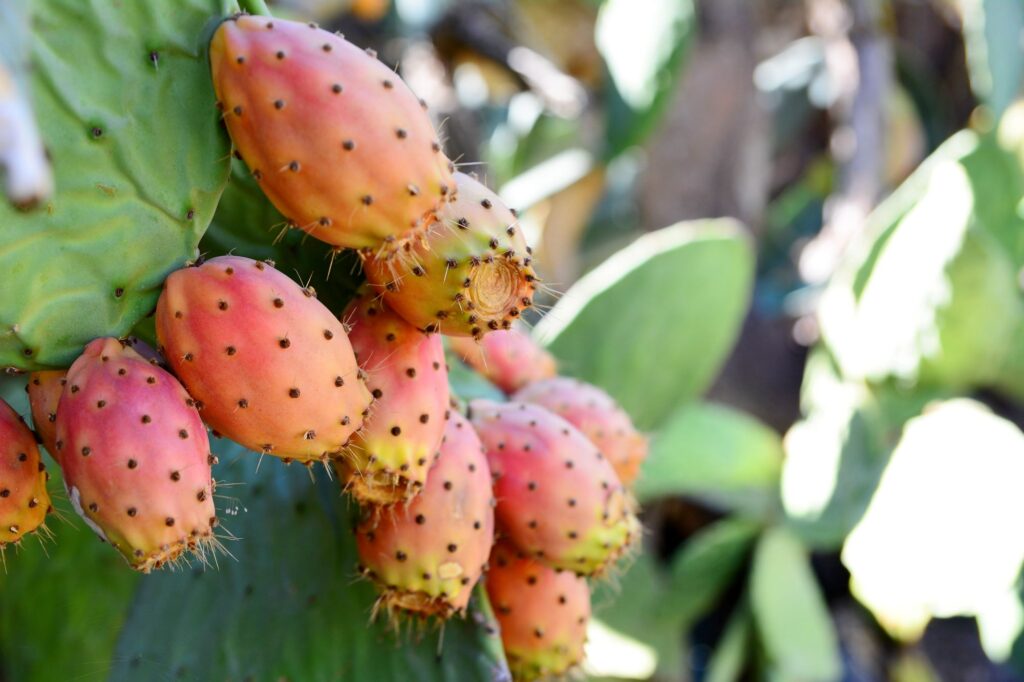
Prickly Pear (Opuntia humifusa)
Missouri’s only native cactus has bright and showy yellow, pink, or white flowers. The cactus pads and fruit can be harvested. (Be careful when harvesting! Using gloves and tongs will help keep foragers safe.) Scrape off the spines with a knife and peel the tough skin before cooking.
Culinary Connection: Prickly pear pads have a green-bean or bell-pepper taste. After you have peeled the skin, slice and chop and cook with garlic for a tasty side dish. The fruit of the prickly pear is often made into a syrup for drinks!
Check out Powell Gardens’ Garden to Glass: Prickly Pear class this summer.
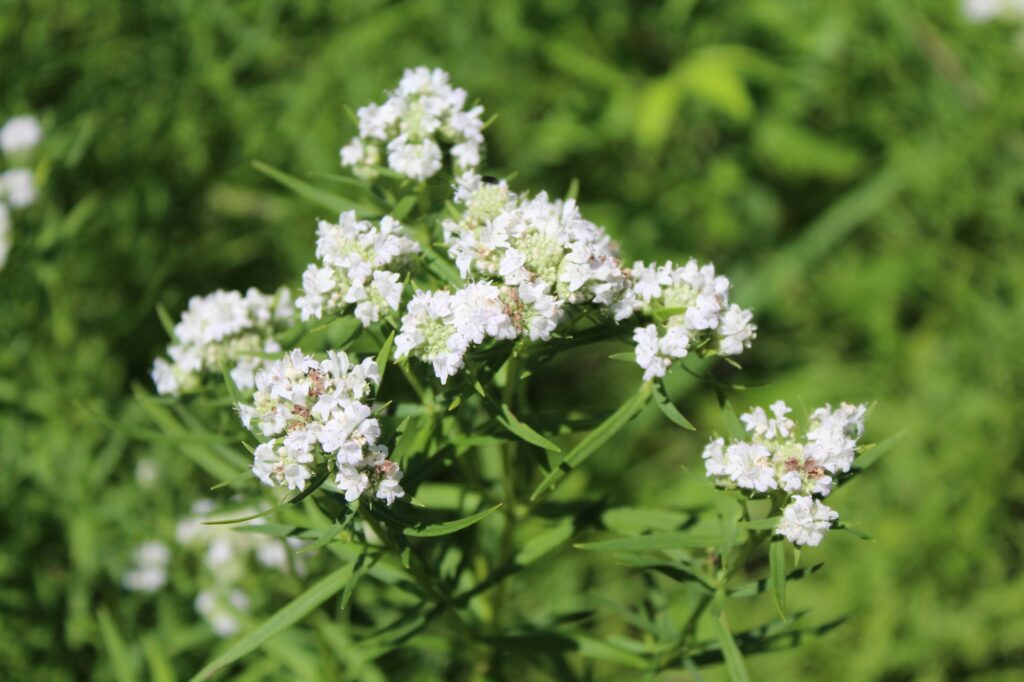
Slender Mountain Mint (Pycnanthemum tenuifolium)
Despite its misleading name, Slender Mountain Mint thrives in diverse environments, open rocky woods, dry prairies and fields, along roadsides, stream sides, and in open, wet thickets. This is an aggressive grower, so harvest as often as you feel comfortable. (The leaves have different flavors based on the season they are picked!)
Culinary Connection: Use the mint leaves in tea or dry the leaves for a more sage-like aroma.
How to Use This Guide
In the Midwest, each season tells a story of abundance. Use this guide to embark on your own spring foraging adventure, savoring the diverse flavors that nature generously provides. We’d love to see your foraged finds—tag @powellgardens on social media. Happy foraging!
Related Posts

